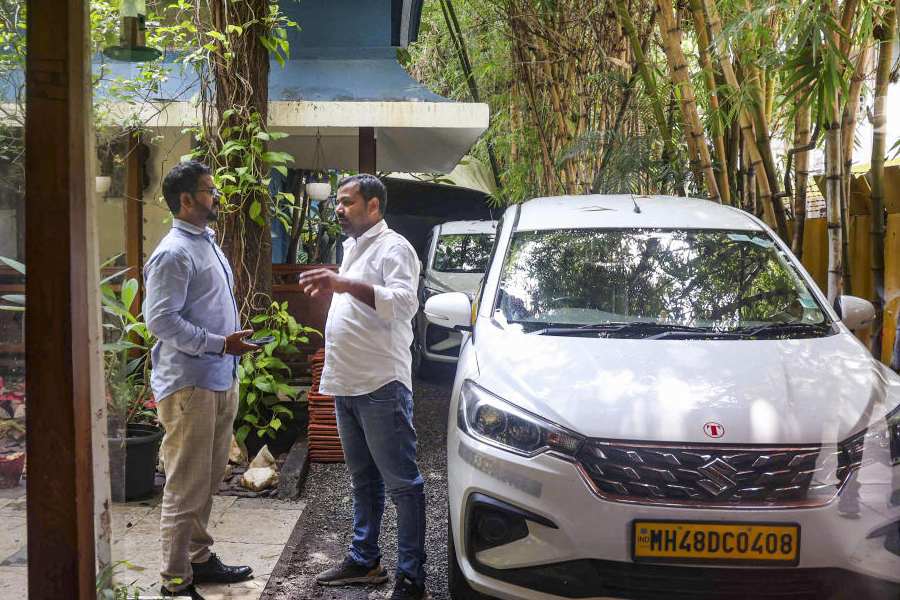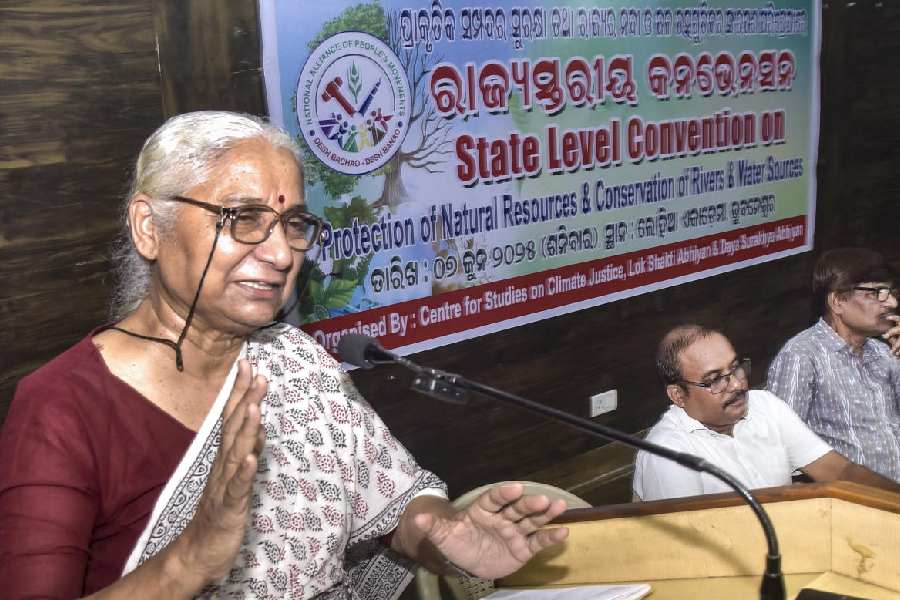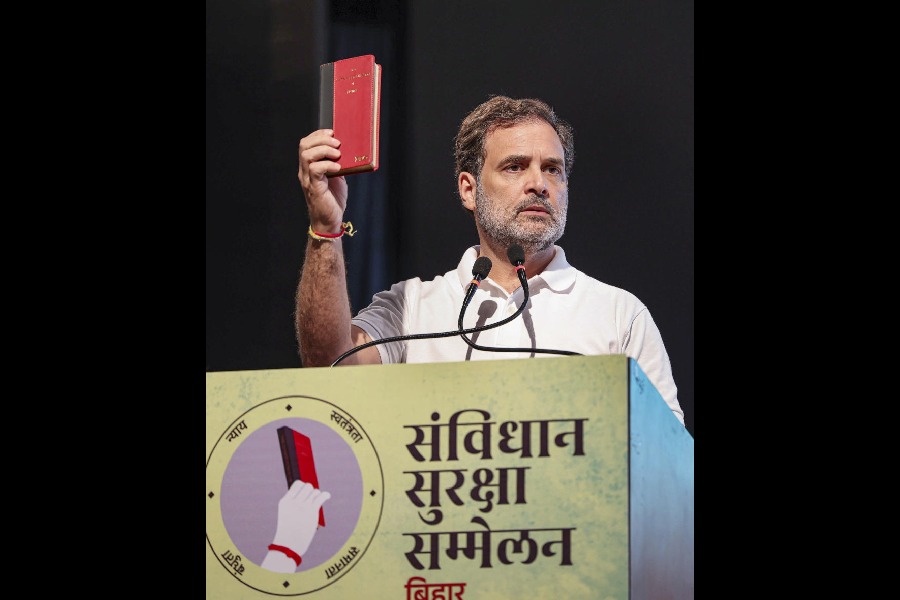 |
| A boat ferries passengers on the swollen Brahmaputra. Picture by Eastern Projections |
Majuli, June 5: As the Brahmaputra rises, so does the income of some people.
Orders are pouring in for the boatmakers of Majuli as the waters of the Brahmaputra approach the danger mark. ?I have made more than 10 boats this year and with some poor people worrying about money, I have to share tips on how to make kol gasor bhur (banana plant rafts),? said Manik Das, a carpenter at Kharjanpar village. Das uses ejar wood to build the canoes ordered for by the moneyed few.
Majuli is better known as the largest river island in the world, proposed to be declared a World Heritage site by Unesco. What is less known is its rapidly shrinking size. The island has shrunk from 1,000 km in the fifties to almost half its size, thanks to rampant erosion by the Brahmaputra.
Last month, officials of the Assam inland waterways department and the Brahmaputra Board visited far-flung areas such as Dakhinpat. They advised against the use of boulders to prevent erosion, keeping in mind the sheer size of the river, sources said. ?There is no danger yet but local authorities and the CRPF have been asked to stand by in case of any emergency if there are floods,? said T.K. Gohain, election officer and officiating SDO at Majuli.
With the southwest monsoon expected early this year, the fear of floods looms large over the island, which has had a two-year reprieve. Upturned spruced up canoes at the Mising tribal villages indicate that preparations for the rains are on in full swing. Those who cannot afford canoes are bracing themselves for any eventuality.
As villagers rule out communication by road ? the road link from Kamalabari to Garamur was constructed more than a decade ago, while a bridge sanctioned in the mid-Seventies has still not been constructed ? the boatmakers have a field day.
On the banks of the Lohit river, which divides Majuli from Lakhimpur district, a duo was working hard to finish a huge boat. ?This one is for 200 people and it is my sixth boat this season,? said Ranjit Gam. His younger companion, Ranjit Mili, has made three boats since January. The boat will be used by residents of Majuli, who work in north Lakhimpur and take the ferry to reach the busstop.
The boatmakers move from village to village, completing the canoes within days. A small boat to seat 35 people, made of unseasoned wood, sells for Rs 10,000. When made from seasoned wood procured a year earlier, it costs a few thousand more but lasts nearly 15 years.
In Majuli, every village which has a waterbody has a government-employed boatman. ?I want my job to get regularised before the floods come, so that the Rs 2,000 I get every month becomes my regular income,? said Binod Hazarika, a boatman.
at Silikhaguri village, 20 km from the centrally- located Kamalabari.
Sources said more than Rs 84 crore have been spent in the last two years on central schemes.
Remote areas like Begunipat, which have been eroded away from the mainland, have much to fear and so do areas close to the river bank. Water has already begun to seep into the circular bund road that passes around the island and road transport is becoming increasingly difficult.
?We live with water and in water. But I think if there is more sincerity in the government, the island could be better off,? said Nabajyoti Borah of Silikhaguri.










